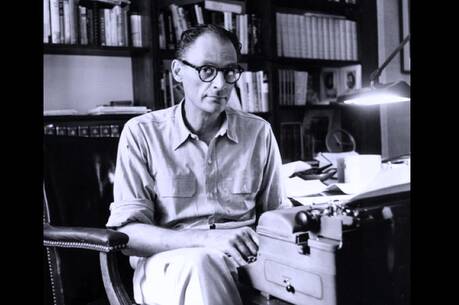St. Patrick’s Cathedral—no, not the famous one on Fifth Avenue in New York City, but the original one of the same name in lower Manhattan—is not far from where I live, and from time to time I stop by to enjoy its soaring space and historical associations with the Jesuit order. Officially called St. Patrick’s Old Cathedral, but more familiarly known as Old St. Patrick’s, the massive gothic revival church and its tree-shaded grounds and cemetery take up half a city block in Little Italy. It may surprise you to learn that Old St. Patrick’s was built by a Jesuit, the Alsacian-born Antony Kohlmann (1771-1836). According to Joyce Mendelsohn’s history of Old St. Patrick’s, he was chosen to organize the then-new diocese of New York. The area around this first cathedral was populated largely by Irish immigrants.
As the first pastor, Father Kohlmann continued to oversee the administration of the diocese until the arrival of an Irish Dominican, John Connolly, who assumed those responsibilities as the diocese’s second bishop. Soon afterward, Elizabeth Ann Seton sent several Sisters of Charity to establish an orphanage across the street in a building that later became a school serving the immigrants’ children. The handsome red brick building still stands and continues to this day as a school.
By the mid-1800’s more and more immigrants fleeing Ireland’s Great Famine settled in the area. Struggling to establish a foothold in their adopted land, they faced virulent anti-Catholic violence. Nativists set fire to nearby St. Mary’s Church, and at one point a mob marched toward Old St. Patrick’s itself, but turned back on hearing that armed Catholics awaited them. Fire finally did overtake Old St. Patrick’s, however, though not until after the Civil War—the result not of Nativist prejudice, but of an accident. By 1868 the cathedral had been rebuilt and again served a growing number of immigrants. By then many were Italians—a circumstance reflected in the donor names at the base of the stained glass windows.
But even as the rebuilt Old St. Patrick’s continued to serve an immigrant population, the now much more famous “new” St. Patrick’s on Fifth Avenue was nearing completion. In that project, too, Father Kohlmann had indirectly played a role. Early in the 1800’s, he purchased the ground on which the new cathedral stands, intending to found there a school for boys to be called the New York Literary Institution. The school lasted only a few years, but the land stayed in church hands and was eventually chosen as the site for the new St. Patrick’s.
Meanwhile, the population surrounding Old St. Patrick’s continued to change. During the second half of the 20th century, new groups of immigrants—Chinese and Hispanic—moved into the area. Some Italians still remain, and on warm evenings you see elderly Italian women seated in folding chairs on the sidewalks in front of their tenements. But Spanish, not Italian, is now the language of the church’s main Sunday Mass. The church also offers a Friday evening Spanish Mass, which I occasionally attend, taking pleasure in the lively music provided by guitarists and a keyboard player. But those present generally number only about 40. More attend the Spanish Sunday Mass, but as one parishioner said, in such a gigantic space they do not look like many.
Without gentrification, there might be more. But housing costs have risen so sharply that poorer residents without rent control or subsidized housing have been forced out as the area has gone increasingly upscale. Across from the church’s main entrance on Mott Street, for instance, are boutiques selling luxury items like expensive handbags and jewelry. Passersby are mostly young and—comparatively at least—moneyed. Just around the corner on Prince Street is a new apartment house, with rents of over $6,000 a month. Its historic status alone assures Old St. Patrick’s continuance as a parish church. One regrets, though, the gradual disappearance of the immigrant populations that were responsible for its growth in its beginning years and on into the second half of the 19th century.








Still, I am sorry that you did not mention ,in the Church complex, at 266 Mulberry St , "Saint Michael Russian Catholic Chapel", a vibrant and living community in the byzantine rite.
That Chapel is one of a handfull of RUSSIAN CATHOLIC churches in the world and one of the two in the USA. It is also an expresion of the immigrant culture of New York and the rich diversity of Catholicism.
Still, I am sorry that you did not mention ,in the Church complex, at 266 Mulberry St , "Saint Michael Russian Catholic Chapel", a vibrant and living community in the byzantine rite.
That Chapel is one of a handfull of RUSSIAN CATHOLIC churches in the world and one of the two in the USA. It is also an expresion of the immigrant culture of New York and the rich diversity of Catholicism.